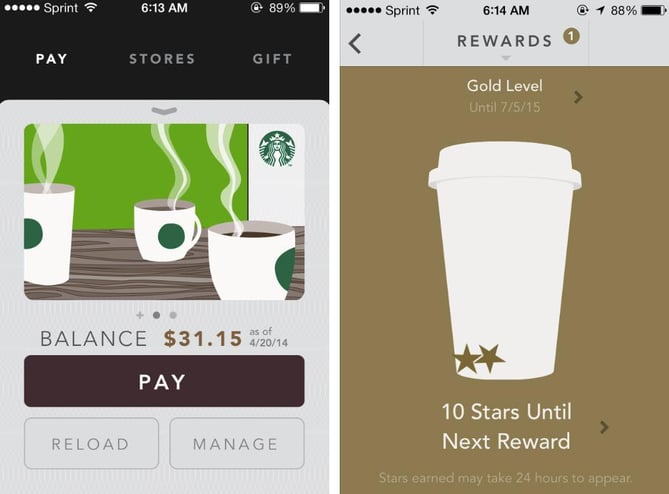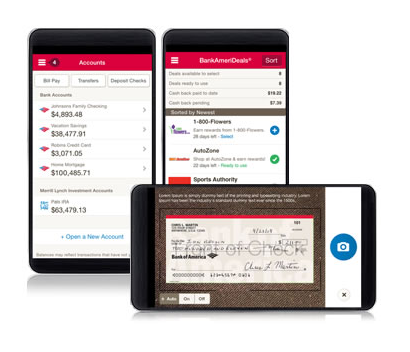Omnichannel… Are you coming up blank at the term?
Okay, let me explain what omnichannel means.
Omnichannel marketing is in essence a multi-channel sales approach that provides an integrated and cohesive shopping experience regardless of the channel the customer is using to reach out to your brand – be it desktop, a mobile device, by telephone or via your brick and mortar store. The more technology advances, the deeper it is being ingrained into our daily lives. Even as you are reading this article, I’d venture a guess that you are within arm’s reach of several internet-connected devices. It comes as no surprise that 98% of Americans switch between devices in the same day.
Omnichannel marketing has now become a key strategy for brands to reach tech-savvy customers. Omnichannel user experience fosters a profound sense of trust and relationship with brands, which will eventually create a positive brand image and increase customer retention rates. In fact, Businesses that adopt omnichannel strategies achieve 91% greater year-over-year customer retention rates compared to business that don’t.
Why Use Omnichannel Marketing Approach?
It is important to understand that an omnichannel user experience is different from a multi-channel experience. Omni-channel experiences employ different platforms, but keep in mind that not all multichannel experiences are omnichannel. For instance, even if you have effective mobile marketing, engaging social media campaigns, and a great user interface design, what’s the point of having all of them when they don’t work together seamlessly. It is not omnichannel at all.
Omnichannel marketing also works across all those channels, but in a way that best fits the needs of each customer. Some stores such as Home Depot reveal the location of each product in the store to customers beforehand, so customers can navigate through the store using their phones, instead of having to solicit the help of a representative who might flounder for the right answer.
Today, more and more businesses are striving hard to invest their efforts, energy, and resources in creating a multichannel experience. In this ever-changing digital landscape, it is not enough to offer multiple channels or create an exceptional experience in each. The key to success is to put your users at the center of your multichannel design by offering an omnichannel approach that gets potential customers to take immediate action, irrespective of the channel or device.
This way, you will be able to offer an out-of-the-box experience for every user, regardless of how they interact with your brand. In this regard, omnichannel marketing is about blending different channels together to offer a better buyer’s journey and customer experience. This can mean using the target app to receive online coupons and then visit the store to confirm purchase or purchase your morning cup of coffee at Dunkin’ Donuts with the help of their app while you are waiting in line.
Many brands leverage website, blog, Twitter, Facebook, Instagram and various other platforms to engage and connect with their target audience. However, most brands fail to offer an outstanding experience and consistent brand messaging across all channels.
On the other hand, if we talk about offering an omnichannel experience, every platform and device a user will use to interact with your brand delivers an integrated experience. Brands that are using this unique technique can effectively align their brand messaging, goals, and design across every channel and device.
How to Implement Omnichannel Marketing Approach in Your Brand?
If you want to make the most of this results-driven marketing technique, it is important to come up with an effective strategy. Work closely with different departments such as sales, marketing, design and product management to create a workable strategy. Once every concerned department clearly understands the goals and objectives of your omnichannel marketing, it will make it easier for you to create an effective strategy and start working on this model.
If truth be told, omnichannel marketing is effective for customers who are looking for a personalized experience. In order to create a seamless and effortless, high-quality user experience, it is important to place users at the core of your UX strategy.
To create an omnichannel UX, web designers need to follow focus on these five design principles that will eventually help them deal with multichannel challenges.
1. Consistency
Today, consumers expect a consistent and meaningful experience in every interaction with your brand. So, focus on uniformed functionality and a homogenous tone to build your brand credibility.
Here’s how Disney does it:
Disney is capitalizing on omnichannel marketing by making it extremely easy for their consumers to feel a connection. Every small detail of their website is mobile-responsive and intelligently optimized for myriad devices. When visitors book their Disney World resort trip, they can use the My Disney Experience tool to plan the entire trip. They can use the app to locate attractions they want to see and view the estimated waiting time for each attraction. In addition, their Magic Band Program offers an amazing omnichannel experience. It serves as a food ordering tool, hotel room key, a photo storage device, a pass to enter the Disney World and pays for all the purchases made in the park.
2. Availability
Provide your potential customers with a myriad choices to interact with your brand according to their personal preferences and habits.
Bank of America takes their omnichannel UX strategy to a whole new level by providing a dynamic experience to their customers. Users can deposit their checks, pay their bills, schedule appointments, cancel payments, and get cash back from both their mobile and desktop apps.
3. Seamlessness
Make it easier for customers to pause any action and resume it whenever they want from any device or channel. The seamless channel transitions require a real-time view of the customers and back-end integration across all channels.
Take Starbucks as an example:

Starbucks has now become an omnichannel savant. The coffee brand is doing a great job at offering a seamless user experience. Starbucks rewards app is a great example of a seamless and effortless user experience. Users get a free reward card that they can use whenever they make a purchase. Starbucks has made it possible for their valued customers to check and reload their card through their smartphone, via the website, in a physical store or using the app. Any minor tweak to the card gets immediately rolled out across all channel, in real time.
4. Context-Optimization
Context-optimization enables your brand to make the most of the omnichannel approach. Brands can enhance their user engagement by providing the best possible experience that is well-suited for the particular touchpoint.
Oasis is a famous fashion brand that is integrating their ecommerce site, mobile app, and traditional stores into a seamless shopping experience. If you visit their store, you will be welcomed by their sales representatives equipped with iPads, willing to give you accurate and up-to-date product information pertaining to any item you show an inclination for. The iPads serve as a cash register, making it easier for sales representatives to get in touch with you anywhere in the store. On top of that, if the desired product is unavailable, the associates can place an online order for you. Bravo, Oasis!
5. Channel Neutrality
Keep in mind that an omnichannel UX approach must be channel neutral. It is highly advised to provide the same information and options across all channels to make it easier for users to jump between touchpoints across different platforms without any interruption or delay.
Crate and Barrel is the furniture and home accessories store that implemented an omnichannel approach to meet their target audience’s needs. The brand makes it easier for potential customers to complete the purchase process through any device. Whenever users log into their account, the app automatically saves their shopping cart and browsing history, so they can access this information across multiple devices. This amazing implementation lets users resume their shopping activity where they left off. Implementing this omnichannel UX strategy in their mobile and website enabled Crate and Barrel to increase their revenue by up to 10%.
Wrapping Things Up
Though creating an outstanding omnichannel user experience across multiple channels is an arduous undertaking that takes a smart and intelligent backend platform and APIs. But trust me, it is worth the investment. It is the key to gaining qualifies leads and has the potential to transform customers into brand ambassadors.





